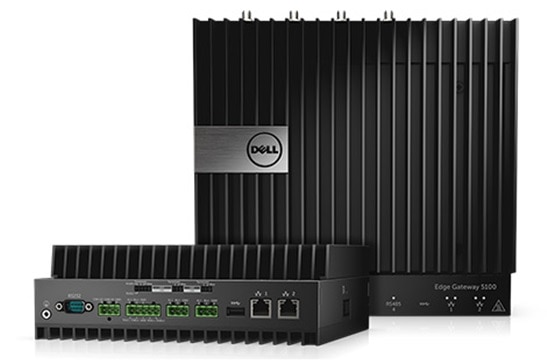Never a dull moment. I believe that is the biggest perk of working in the technology sector, at least if you like change as much as I do. Edge computing is one of the new trends that I find really exciting. Why? Three reasons: it goes against some common beliefs, it represents a growth market, and it brings the alliance partners I work with a lot of opportunities.
Edge computing is brought on by a number of factors, and it’s nice to see how recent developments strengthen each other. In this case, emerging technologies like the Internet of Things (IoT), immersive multimedia like Augmented Reality and Virtual Reality (AR/VR), 5G, edge security apps and big data. As ever, the huge amounts of information that we are generating is at the root of this new theme. According to IDC, there will be 80 billion IoT connected endpoints by 2025 that will contribute hugely to the production of 162 zettabytes of data.
Real time demands low latency
The traffic that all these bits and bytes cause and the inherent real-time nature of these applications, is testing the limits of our current networks (hence the move to 5G in a few years from now) and of cloud computing. Let me give you an example: cars are so full of electronics nowadays that they easily contain 100 CPUs already, and with connected and driverless cars coming along, the number of CPUs will certainly increase by a factor of 50 or even 100. That means 5.000 to 10.000 CPUs, all generating data. Does it make sense to send all of this data to a centralized cloud infrastructure?
Of course it doesn’t and this is giving rise to ‛Edge Computing’ also called MEC, multi-access edge computing. Edge Computing is an architecture that collects, analyses and processes data from IoT on the edge of the system. This architecture reduces the amount of data sent to the cloud, decreases network and internet latency and thus improves systems response time in mission-critical applications while reducing bandwidth costs. MEC pushes intelligence and processing capabilities to where the data originates, at the edge of the network.
This is swinging the pendulum back towards a distributed model for computing. That doesn’t mean the cloud evaporates. Far from it, but in the age of IoT, companies – and especially telecom companies – will need to build an IT ecosystem that operates at the Edge, the Core and the Cloud. So this is MEC versus cloud computing, it’s all about ‛Fog Computing’, as the edge platforms will run in conjunction with datacenters, private and public/hyper-scale clouds. Fog Computing is a superset of Edge Computing, and essentially includes everything that is not a cloud but will, of course, connect to the cloud.

Massive opportunities
But where does that leave the Service Providers? I am convinced they can benefit at different levels, from offering high-level consultancy to actually building and managing the infrastructure. Consider, for instance:
- High-level consulting to telecom operators: the implementation of 5G is a huge investment, and telco’s are still trying to find ways to monetize new apps that necessitate the coming of 5G. Business consultants can definitely help strategize.
- Edge computing, fog computing and cloud computing will all run on a different overall architecture. Architecture specialists can prove their worth in this domain.
- New datacentres will be set up, especially micro modular datacentres that sit at the edge. Someone will need to take care of implementation and management of this infrastructure.
- The proliferation of infrastructure brings challenges with regard to data security and compliance. Service Providers specializing in governance and data security can make a killing here.
Explosive market
While it is still early days – 5G is not expected to roll out before 2020 – it is certainly worth preparing for this new market by assisting telecom companies in the tests that they are currently running. Let me tell you, the market will be huge. Estimates vary, but market researchers seem to agree that Edge Computing will grow by 35% a year to reach just under a billion dollars in spending in 2022. A lot of the investment will be in hard- and software platform that are completely new. Just think of the micro Modular Datacenters and the Edge Gateways that Dell EMC has uniquely developed.

To consumers using Augmented Reality or Virtual Reality, it may seem nothing more than a game, but what’s under the hood is a lot more complex and requires huge investments from anyone involved. As I said in the opening paragraph of this blog, the constant evolution in technology is what makes our industry one of the most appealing to work in. You learn something new every day, and every day brings new opportunities.
